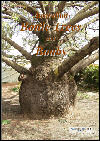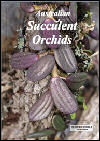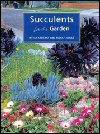Australian Calandrinia
This booklet has exceptionally high quality images of Australian succulent calandrinias in habitat. Covering many of the common and also some of the very rare.... more »» | |
Australian Bottle Trees and Boabs
This booklet has many high quality images of Australian bottle trees and boabs, both in habitat and in cultivation. Comparing the various species and distinguishing features. There are five Australian species covered.....more »» | |
| |
   |
Australian Succulent Orchids
|
Succulents for the GardenSucculents have come a long way since grandma's day when they were represented by a few spiny and neglected specimens in clay pots.... more »» | |
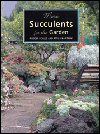 | More Succulents for the GardenMore Succulents for the Garden is the second in a series of books which explains how these fascinating plants can be used in the garden.... more »» SOLD OUT |
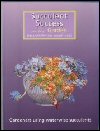 | Succulent Success in the GardenSucculent Success in the Garden is the third in a series of books which explains how these fascinating plants can be used in the garden. In this book a range of gardens are explored.... more »» |
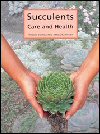 | Succulents: Care and HealthBuying a succulent plant is the easy part. Now what? Where do I grow it? How do I take care of it? What do I need to do to keep it healthy? ....more »»TEMPORARILY OUT OF STOCK |
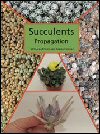 | Succulents: PropagationIf you think there is nothing more to learn about succulent propagation beyond pushing a few leaves into a pot then you are mistaken..... more »» |
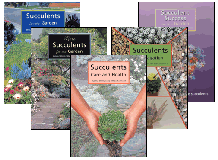 | Succulents For The Garden Series
A series of books on succulents covering what they're called, how to grow them, how to use them creatively in the garden and lots more.
Each book builds on the others, covering how to garden with succulents successfully.. more »»
TEMPORARILY UNAVAILABLE
|
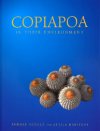 | Copiapoa In Their Environment
Little information on the environment in which cacti naturally grow has ever been available to collectors and growers of cacti. This book, while mainly written for more experienced collectors of cacti who wish to know more about the much prized genus Copiapoa, should also appeal to beginning collectors of cacti and lovers of nature who wish to understand cacti in their dry, often desert, environments.. more »»
|
 | Uebelmannia and Their Environment
The genus Uebelmannia has always had a mystique about it since its discovery in the 1960's. While many collectors are familiar with the ever popular Uebelmannia pectinifera var. pectinifera, the other six taxa are less well known. Field work was carried out over three years.. more »»
|
 | Pinguone, Kenya - Succulents and their Environment
This book deals with a specific area of Kenya and focuses on its diverse succulent flora, mostly on the private ranch 'Pinguone', an area of 44,000 acres (20,000 ha) located in the highlands of Kenya.. more »»
|
 | Echeveria Cultivars
This long awaited book is aimed at collectors and gardeners alike and is currently recognized as the world's best book on echeverias. It covers an outstanding selection of over 130 different echeverias with large photographs showing plants under different growing conditions.. more »»
*Reprints of this popular title are being organised in other languages, please enquire.
|
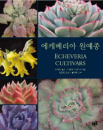 |
Echeveria Cultivars - Korean
|
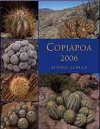 | Copiapoa 2006
Copiapoa 2006 follows the pattern of the previous book, Copiapoa in their Environment.
This book by Rudolf covers all of the described species and their many subspecies and forms.. more »» |
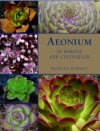 | Aeonium in Habitat and CultivationAvailable November 2007, Aeonium in Habitat and Cultivation covers all the aeonium species in habitat. The second part of the book covers those species and hybrids which are commercially available... more »» |
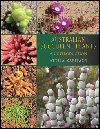 |
Australian Succulent Plants
|
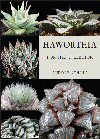 |
Haworthia for the Collector
There have been several books published on Haworthia in the last twenty years, these have all focused on the plants in habitat or on taxonomic issues. |
 | Practical Guide To Australian Orchid GrowingThis small practical guide, written for everybody from the absolute amateur through to the hardened native orchid nut, fills a huge void in Australian orchid literature.... more »» |
 | Adenium: Sculptural Elegance, Floral ExtravaganceThis authoritative and sumptuous book, authored by experts on growing and propagating this lovely plant is chock full of the latest information on the various species that make up the group.... more »» |
 | Tuberous, Cormous and Bulbous PlantsThis book is a very in depth look at a range of plants, including various succulents and other obscure Australian native plants.... more »» SOLD OUT |
 |
Australian Native Plants
A comprehensive and popular book on Australian native plants. |
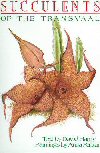 | Succulents of the TransvaalThis book has exceptional appeal to artists and lovers of botanical art alike with inspirational ideas and images to draw on.... more »» SOLD OUT |
Friday, January 10, 2014
books + infer about succulents by RATON
Thursday, January 9, 2014
RATON just loves succulents ....
succulents
Succulent plant
Not to be confused with cactus; botanically cacti are succulents but not all succulents are cacti.
In botany, succulent plants, also known as succulents or sometimes fat plants, are plants having some parts that are more than normally thickened and fleshy, usually to retain water in arid climates orsoil conditions. Succulent plants may store water in various structures, such as leaves and stems. Some definitions also include roots, so that geophytes that survive unfavourable periods by dying back to underground storage organs may be regarded as succulents. In horticultural use, the term "succulent" is often used in a way which excludes plants that botanists would regard as succulents, such as cacti. Succulents are grown as ornamental plants because of their striking and unusual appearance.
Definition
There are a number of somewhat different definitions of the term succulent. One difference lies in whether or not roots are included in the parts of a plant which make it a succulent. Some authors include roots, as in the definition "plants in which the leaves, stem or roots have become more than usually fleshy by the development of water-storing tissue."[1] Others exclude roots, as in the definition "a plant with thick, fleshy and swollen stems and/or leaves, adapted to dry environments".[2] This difference affects the relationship between succulents and "geophytes" – plants that survive unfavourable seasons as a resting bud on an underground organ.[3] These underground organs, such as bulbs, corms and tubers, are often fleshy with water-storing tissues. Thus if roots are included in the definition, many geophytes would be classed as succulents.
Plants adapted to living in dry environments are termed xerophytes; thus succulents are often xerophytes. However, not all xerophytes are succulents, since there are other ways of adapting to a shortage of water, e.g. by developing small leaves which may roll up or having leathery rather than succulent leaves.[4] Nor are all succulents xerophytes, since plants like Crassula helmsii are both succulent and aquatic.[5]
Those who grow succulents as a hobby use the term in a different way to botanists. In horticultural use, the term succulent regularly excludes cacti. For example, Jacobsen's three volume Handbook of Succulent Plants does not cover cacti,[6] and "cacti and succulents" is the title or part of the title of many books covering the cultivation of these plants.[7][8][9] However, in botanical terminology, cacti are succulents.[1] Horticulturists may also exclude other groups of plants, e.g. bromeliads.[10] A practical, but unscientific, horticultural definition is "a succulent plant is any desert plant that a succulent plant collector wishes to grow".[11] Such plants less often include geophytes (in which the swollen storage organ is wholly underground) but do include plants with a caudex,[12]which is a swollen above-ground organ at soil level, formed from a stem, a root or both.[3]
A further difficulty is that plants are not either succulent or non-succulent. In many genera and families there is a continuous sequence from plants with thin leaves and normal stems to those with very clearly thickened and fleshy leaves or stems, so that deciding what is a succulent is often arbitrary. Different sources may classify the same plant differently.[13]
Appearance
Evolution
Many succulents come from the dry areas of the tropics and subtropics, such as steppes, semi-desert, and desert. High temperatures and low precipitation force plants to collect and store water to survive long dry periods. Succulents may occasionally occur asepiphytes - "air plants" - as they have limited or no contact with the ground, and are dependent on their ability to store water and gain nutrients by other means; this niche is seen in Tillandsia. Succulents also occur as inhabitants of sea coasts and dry lakes, which are exposed to high levels of dissolved minerals that are deadly to many other plant species.
Subscribe to:
Comments (Atom)


